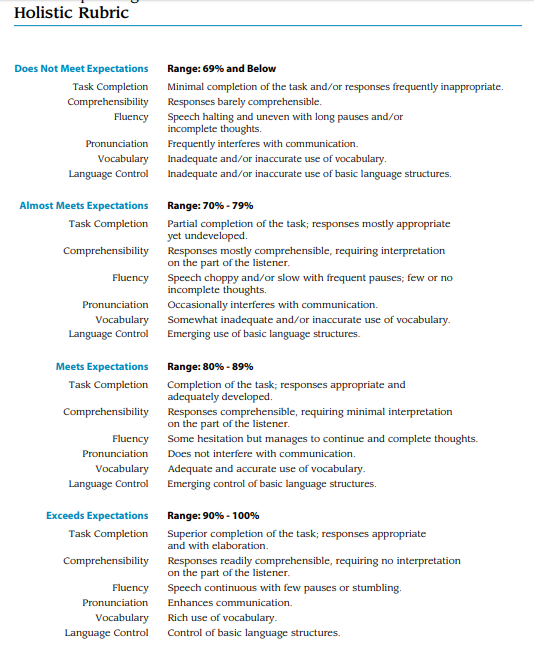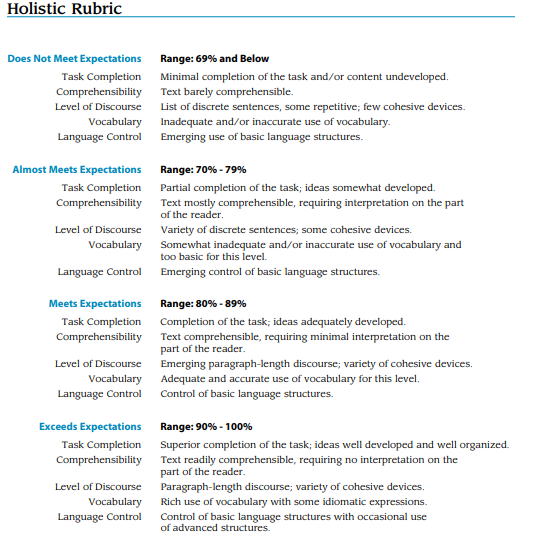The Quarter Project:
Mrs. Newton’s Quarter Independent Final Project: __________
Name of Fiction Text:__________________________________________________
Name of Student:_____________________________________________________
Visual Component: Students will create a slide based presentation with embedded media.
Audio Component: Students will attach an audio track to their presentation.
Presentation Requirement: Students will present their completed projects to their classmates.
Submission Requirement: Students must submit their presentation to the teacher through email or shared document to NewtonLA@pwcs.edu
MLA Documentation: Students will document all resources (pictures, internet sources, printed sources, interviews, etc) using MLA documentation format in a Works Cited slide at the end of the presentation. Students must use at least three sources for this project.
Writing Requirements: Students are required to write all subtitles in either consistent 1st person tense or 3rd person tense. Students are not allowed to use 2nd person tense. Students are expected to present a final presentation free from spelling and punctuation errors. All projects will contain formal diction; free of slang, contractions, and humor.
FICTION (50%)
Fiction Slide Requirements:
1. Exposition (Time, Location) https://youtu.be/llsbezdn4vA
2. Characters (Main, Secondary, Dynamic, Flat, Direct and Indirection Characterization)
https://youtu.be/azUsjQwF_UI?list=PLNsknml-Qpg93YXmkjr9Qrjy9deHVhInh
https://youtu.be/B_GVgbykf8A?list=PLNsknml-Qpg93YXmkjr9Qrjy9deHVhInh
3. Point of View https://youtu.be/sOVMM60Sm2c
https://youtu.be/_mfmtojhUMs?list=PLNsknml-Qpg93YXmkjr9Qrjy9deHVhInh
Mood (reader's emotions) and Tone (writer's emotions) https://youtu.be/C3TZGZn5VwA
Mr. Williams’ Summary of 1. 2. and 3. https://www.youtube.com/watch?v=3xLIKOQ2pO0&list=PLqOhBmbt9pCJHtDNnOWLaabvv-wSa3pvc&index=2&t=0s
_____________________________________________________________________________
4. Initiating Conflict
https://youtu.be/pv8k7KibwA0?list=PLNsknml-Qpg93YXmkjr9Qrjy9deHVhInh
5. Rising Action
Mr. Williams’ Summary of 4 and 5. https://www.youtube.com/watch?v=st2vadPVakk&list=PLqOhBmbt9pCJHtDNnOWLaabvv-wSa3pvc&index=2
_____________________________________________________________________________
6. Climax https://youtu.be/6dE4SiUCfcA?list=PLNsknml-Qpg93YXmkjr9Qrjy9deHVhInh
Mr. Williams’ Climax Video: https://www.youtube.com/watch?v=trSYW2FoV7k&list=PLqOhBmbt9pCJHtDNnOWLaabvv-wSa3pvc&index=3
______________________________________________________________________________
7. Falling Action
8. Resolution
Mr. Williams 7 and 8 Video: https://www.youtube.com/watch?v=RCRKMPAYrLw&list=PLqOhBmbt9pCJHtDNnOWLaabvv-wSa3pvc&index=4
______________________________________________________________________________
9. Two Identified Themes
https://youtu.be/h_27LjqS798?list=PLNsknml-Qpg93YXmkjr9Qrjy9deHVhInh
https://youtu.be/Uuni4wbtIHU?list=PLNsknml-Qpg93YXmkjr9Qrjy9deHVhInh
https://youtu.be/p4qME64SkxM?list=PLNsknml-Qpg93YXmkjr9Qrjy9deHVhInh
10. Identify the author’s purpose and archtype(s) utilized by author in the fiction story.
11. Identify any morals or virtues embedded in the fiction story.
___________________________________________________________________________________
NONFICTION (50%)
12. Resolution
Nonfiction Slide Requirements: The student will research one nonfiction elements directly linked to their fiction presentation. Students must get prior approval from Mrs. Newton short story for any factual elements found in the story plot. The nonfiction portion will address the 5 W's and H and explain them in as much detail as MLA possible. Who? What? Where? When? Why? How? MLA document everything.
GRADING RUBRICS & GUIDES
Directions: Download the link to find the grading rubrics for your quarterly project essay. Follow the rubrics to achieve the highest possible grade.
Mrs. Newton’s Quarter Research Nonfiction Portion of Project Grading Rubric
|
|
5 (90-100%) |
4 (80 – 89%) |
3 (70 – 79%) |
2 (60 – 69%) |
1 (50 – 59%) |
0 (10 o 49%) |
|
Grade Received |
|
|
|
|
|
|
|
THESIS |
Thesis indicates clear sense of purpose and insightful or original perspective. Thesis guides the entire paper. |
Thesis indicates a sense of purpose and addresses the prompt. Thesis guides the paper. |
May be broad or general but addresses prompt. Thesis exerts some controls over paper. |
Thesis attempts to address the prompt but gives no clear sense of purpose. |
Thesis is undeveloped, factually based, or ignores the prompt. |
Lacks a thesis. |
|
ACE con Main Points and Supporting Details
|
Substantiates thesis with a range of well-chosen evidence that is integrated smoothly and effectively. Knows when to use direct quotes or indirect paraphrasing appropriately. |
Supports thesis with well chosen evidence. Quotes are integrated, but may not be as fluent or cohesive as a 5. |
Provides related evidence. May sometimes show simplistic choices. Makes an attempt to give context for evidence. |
Provides insufficient evidence; summarizes, oversimplifies, or contains errors. |
Contains summary instead of evidence. Shows a significant misreading or misunderstanding of the text. |
Lacks evidence. |
|
ANALYSIS of Literary Devices /Figurative Language/Nonfiction Structures |
Demonstrates thorough and logical reasoning. Interprets evidence with insight. Analysis communicates genuine engagement with the text. |
Demonstrates logical and convincing reasoning. Shows a clear understanding of the topic, but may lack the insightful perspective of a 5. |
Displays some logical reasoning though in places analysis may be predictable or not fully developed. Contains a basic understanding of the topic but may not contain insight. |
Contains insufficient analysis. May rely on summary, lists, or descriptions in place of analysis. May misread or oversimplify the text. |
Lacks coherent analysis. Displays simplistic response to the thesis. Suggests a major misunderstanding of text or prompt. |
Lacks analysis. |
|
ORGANIZATION OF PAPER & PARAGRAPHS, and CONTENT REQUIREMENTS |
Demonstrates logical sequence of ideas within paragraphs and throughout the paper. Opens and closes with direct and clear focus on topic. Closes with a synthesis of ideas. Uses transitions well. |
Demonstrates logical sequence of ideas throughout most of the paragraphs and the paper. Opens with a clear focus on topic; conclusion more than restates and uses transitions. |
Demonstrates logical sequence of ideas with some breaks in unity; conclusion may simply restate thesis. Uses some transitions and paper is still focused. |
May be lapses in the logical organization. Lacks transitions. Loss of focus. |
Sequence of ideas or paragraphing is illogical. Conclusion may be undeveloped. |
Lacks organization. Lacks a conclusion. |
|
VOICE AND STYLE |
Word choice is formal, sophisticated, and precisely communicates ideas. Style is appropriate for the purpose; sentence variety and command of language make the essay a pleasure to read. |
Word choice is formal, precise, and effective. Shows some sentence variety; style is appropriate for the purpose and audience. |
Voice should be formal and appropriate for academic writing. Shows some sentence variety and sophisticated vocabulary. |
Word choice is simple, predictable and may be imprecise. Style may not be appropriate for purpose or audience. Lacks transitions. Little sentence variety. |
Language is informal, vague and inaccurate; little sentence variety. Style is not appropriate for purpose or audience. |
Language is confusing and inaccurate. No understanding of audience. |
|
CONVENTIONS capitalization, punctuation, grammar, verb tense. MLA |
No significant errors. Follows MLA format and citation conventions. |
Minor errors that do not show systematic misunderstanding of a grammatical concept, but instead reflect inaccurate proofreading. Follows MLA format. |
Occasional errors in grammar, word usage and other conventions, but they do not interfere with coherence or meaning. Follows MLA format. |
Essay is coherent but flawed by frequent errors in conventions. May contain some awkward phrasing or faulty sentence structure. |
Frequent errors create confusion and ambiguity. Contains flawed sentence structure and/or phrasing. |
Numerous errors in most sentences which obscure meaning. |
Mrs. Newton’s Quarter Project: Fine Art & Music Descriptive Component Grading Rubric
|
|
Photograph/Painting/Fine Art Object |
Song Lyrics or Poem |
|
Relates directly to the Fiction or Nonfiction Analysis |
Yes No |
Yes No |
|
Presentation of Fine Art Component was completed in Project Presentation |
100% - 0% |
100% - 0% |
Quarter Project ELL Speaking Grading Rubric

Quarter Project ELD – Writing Grade Rubric

|
|
Fiction Analysis Rubric The items listed below are intended to provide feedback in a number of critical areas which your instructor deems important to your analysis. They are in no way meant to be of equal value. |
100 – 90% (Superior) |
89 -80% |
79 – 70% |
69 – 0% (Weak) |
|
THESIS |
|
|
|
|
|
|
1 |
(ACEcon) Thesis is focused and has two main topics with supporting details |
q |
q |
q |
q |
|
2 |
Includes an effective introduction and conclusion that advances thesis |
q |
q |
q |
q |
|
ORGANIZATION |
|
|
|
|
|
|
3 |
The analysis paper has clear structure: Introduction ACEcon Thesis Paragraph Exposition Paragraph. Conflict Paragraph. Rising Action Paragraph. Climax Paragraph. Falling Action Paragraph. Resolution Paragraph. |
q |
q |
q |
q |
|
4 |
Paragraph explaining author’s style with examples of literary devices and figurative language used in the fiction text. |
q |
q |
q |
q |
|
5 |
Paragraph the organizes the supporting ideas in to support the related main topic(s). |
q |
q |
q |
q |
|
CONTENT |
|
|
|
|
|
|
6 |
Presents original ideas not just a rehashing of class discussion |
q |
q |
q |
q |
|
7 |
Presents well thought out interpretation and sophisticated analysis |
q |
q |
q |
q |
|
8 |
Provides accurate, fair, and plausible information/analysis from texts |
q |
q |
q |
q |
|
DEVELOPMENT AND SUPPORT OF IDEAS |
|
|
|
|
|
|
9 |
Develops ideas fully with an awareness of audience needs (reader-based rather than writer-based prose) |
q |
q |
q |
q |
|
10 |
Presents, concedes, and disarms arguments counter to thesis |
q |
q |
q |
q |
|
11 |
Provides substantial support for assertions (including research if applicable) |
q |
q |
q |
q |
|
12 |
Provides accurate, fair, and plausible information from texts |
q |
q |
q |
q |
|
STYLE |
|
|
|
|
|
|
13 |
Uses language at an appropriate and sophisticated level for audience |
q |
q |
q |
q |
|
14 |
Provides an appropriate level of precision in stating ideas |
q |
q |
q |
q |
|
15 |
Provides transition which smoothly links sections and ideas within paragraphs and sections |
q |
q |
q |
q |
|
16 |
Unifies paragraphs appropriately |
q |
q |
q |
q |
|
USAGE/GRAMMAR |
|
|
|
|
|
|
17 |
Uses language which is clear, concise, and appropriate |
q |
q |
q |
q |
|
18 |
Uses standard English and its conventions consistently |
q |
q |
q |
q |
|
19 |
Varies sentence structure |
q |
q |
q |
q |
|
MLA FORMAT AND DOCUMENTATION |
|
|
|
|
|
|
20 |
Uses format appropriate to the discipline |
q |
q |
q |
q |
|
21 |
Incorporates and documents information correctly |
q |
q |
q |
q |
|
22 |
Determines credibility of sources |
q |
q |
q |
q |
Comments: